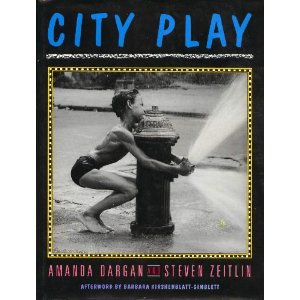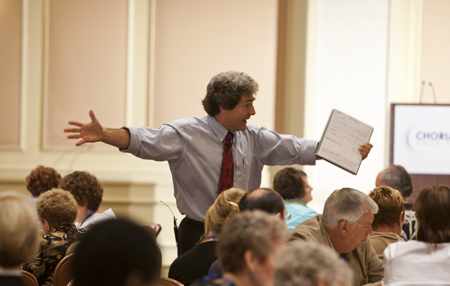Dewey 21C: January 2011 Archives
(Milton had received both the American Music Center's Letter of Distinction, in 1984, and its Founders Award, in 2006.)
One of the things I have never forgotten about that speech, was the funny and sad, but true observations of how all the names for the music field to which Milton belonged were horribly lacking. Milton went on to list each one and their respective shortcomings:
1. Concert Music
2. Serious Music (yes, I kid you not...)
3. Contemporary Classical (an oxymoron)
4. New Music
5. Classical Music
6. 20th Century Music
There were a few other times that I had dinner with Milton, at a budget Chinese restaurant near Juilliard. The conversation could change on a dime, and if you weren't careful, Milton might leave you in the dust. One moment it was Schoenberg, the next moment it was baseball, the next moment it was the lack of support for composers, next musical theater,and then it could just as easily shift to beer.
The people who compose this sort of music are becoming fewer and far between. But don't be mistaken and think that their work only lives in the Academy, for Milton had his quite a group of musician fans, not the least of which was James Levine. A great investment was made to perform Milton's works, similar to the effort that might have to be made to read The Sound and The Fury or listen to John Coltrane's Meditations, but the effort has a great payoff.
We need these composers/scientists, just as we need our Faulkners, Joyces, Melvilles, and Ernico Fermis.
I'll close this little entry for Milton Babbitt, by recalling the great pride, care, and admiration he evinced during his long tenure chairing the BMI Young Composer Awards. I watched him many times, announce the award, and shake the hand of each winner, and you could see how much being part of this community meant to him and how tickled he was to look at the young composers with their careers in front of them. That look on his face was priceless...
Rest in peace, Milton Babbitt.
______________________________________________________________________________
For those interested in learning more, I would suggest that you read the interview with Mliton in NewMusicBox.org.
Or, buy this really great book of inteviews with some of the greatest composers of the 20th Century, including Milton Babbitt: Talking Music: Conversations with John Cage, Philip Glass, Laurie Anderson, and Five Generations of American Experiemental Composers., by William Duckworth.

How Billionaires Rule Our Schools, by Joanne Barkan.
Okay, go ahead and laugh, and make it a good one, but don't be too surprised by the first thought that came to mind while reading this article: How can we get these institutions to really drive home arts education???
One project, the Broad Superintendents Academy, pays all tuition and travel costs for top executives in their fields to go through a course of six extended weekend sessions, assignments, and site visits. Broad then helps to place them in superintendent jobs. The academy is thriving. According to the Web site, "graduates of the program currently work as superintendents or school district executives in fifty-three cities across twenty-eight states. In 2009, 43 percent of all large urban superintendent openings were filled by Broad Academy graduates."




Bloomberg's Gun-Limits Coalition Grows, but Finds a Hard Sell in Washington, Elizabeth A. Harris, The New York Times, January 26, 2010
But despite the coalition's size, its deep pockets and its muscular public relations operation, Mr. Bloomberg's campaign has failed to force major strengthening of federal gun control laws.
1. It casts a light on the long-term nature of advocacy efforts.
2. It affirms the importance of fighting for what you believe.
3. It shows that even Michael Bloomberg, with all his power and influence, can hit a brick wall.
And, well, for me, there's more than a little bit of irony here. Shall we say if falls broadly into the category of karma?
I have been involved in arts education advocacy efforts related to the New York City public schools, which are controlled solely by Michael Bloomberg for a number of years now.
I am sorry to say that very little of real substance has been achieved, particularly around the issue of restoring categorical funding for arts education, which virtually every arts educator, and non-arts educator I know, excepting those who work at the senior administration level of the NYCDOE, agree is necessary in order to protect and sustain arts education.
There have been many conversations about what to do about arts education in the New York City Public Schools. And guess what, the conversation always comes around to restoring categorical funding (Project Arts). It's uncanny, a sort of arts education sea level. You can read a little bit about it here, here, and here, here.
What is more, there have been many policy recommendations made and presented to the NYCDOE in great earnest, by numerous individuals and organizations, and virtually all have been rebuffed.
I admire what Michael Bloomberg is doing to fight the out of control gun lobby in America. And, I also glad to see that even his interests in making change has found doors closed.
My hope here? Well first I hope Bloomberg will keep up the fight against the gun lobby, and will cheer his efforts, and would like to echo David Stockman's call on Bill Maher's show last Friday night that guns should be scorned:
The Second Amendment is a vestigial relic of frontier farmers three centuries ago. It's about as relevant as chamber pots and the bleeding cure. It's really is not necessary to talk about the Second Amendment in the 21st century.
...What we really need is education. What we need is leadership. We need people who are in prominent positions to say 'Guns aren't necessary. They're not needed.' They're not part of everyday life in the 21st century, and they are to be condemned, not to be argued for, as (gun rights advocates) constantly do. And we'll get farther that way than we will fighting another legislative battle."
I would hope that the Mayor and Schools Chancellor might take this experience through lobbying for gun control legislation, and perhaps take a fresh look at some of the advocacy efforts for things like a quality arts education for all New York City Public Schools.
As historic cuts to public education funding meet super-heated accountability on ELA and math, there are things that can be done to protect arts education from being blown off the education landscape.
Maybe, just maybe the experience with gun lobbying will make for new possibilities...

Tomorrow? Well, maybe I will use a phrase that Rob Horowitz and I used to bandy about: the churn.
I am a big fan of Valerie Strauss's blog in the Washington Post: The Answer Sheet.
It doesn't hurt that she has from time-to-time pointed towards Dewey21C, but really, it's because of posts like the one I am going to direct you to, that I really admire her work.
She's posted a guest blog by William J. Mathis, Managing Director of The National Education Policy Center.
Click here to read Test Scores and Economic Competitiveness.
Now, I didn't write this piece, so, I am only the messenger. That being said, don't be too frustrated if you find that it affirms an overemphasis on test scores, while at the same time challenging some of the arguments arts education advocates have been deploying regarding the workforce of the 21st century.
Perhaps the most important take away, is what most if not all advocates I know believe about the arts, that ultimately it is an equity issue:
Unfortunately, the United States has become the most inequitable of the developed nations -- a very dubious number one ranking. The simple arithmetic shows that we will remain low-scorers as long as we perpetuate huge economic disparities and inequalities in the quality of schooling we provide. Number one ranked Finland has 3% poverty while the United States has over 25% poverty.
It is the scores of our most needy children that pull our national average down. One of the reasons that other nations are catching up and surpassing us is because they are building their middle class while the United States is pursuing policies that destroy theirs.
The highest scoring international states have high resiliency scores, which is based on the link between socioeconomic levels and test scores. That is, do children boot-strap their way up through education? The United States has among the worst resiliency rates.
And here's one more just for good luck, but please, click on through to the other side:
High stakes standardized tests narrow and dumb the curriculum. Social studies, science, art and music instruction have been reduced by a third in some states. If it is testable in a standardized way, it is unlikely to measure the knowledge, flexibility and creativity needed for a new and uncertain age.
Here are two stories, that go a long way towards showing how education is often traveling in more than one direction at any given moment.
The first is about a recent study finding testing to be among the best ways to really learn something: To Really Learn, Quit Studying and Take a Test, by Pam Belluck, New York Times, January 20, 2011
Taking a test is not just a passive mechanism for assessing how much people know, according to new research. It actually helps people learn, and it works better than a number of other studying techniques.
Howard Gardner, an education professor at Harvard who advocates constructivism -- the idea that children should discover their own approach to learning, emphasizing reasoning over memorization -- said in an e-mail that the results "throw down the gauntlet to those progressive educators, myself included."
Okay, that's one direction, here's another, framed by two different bits of media.
First, another New York Times article, the gist of which has been covered before in Dewey21C, here and here: Efforts to Restore Children's Play Gains Momentum, by Hillary Stout, New York Times, January 6, 2011
Too little playtime may seem to rank far down on the list of society's worries, but the scientists, psychologists, educators and others who are part of the play movement say that most of the social and intellectual skills one needs to succeed in life and work are first developed through childhood play. Children learn to control their impulses through games like Simon Says, play advocates believe, and they learn to solve problems, negotiate, think creatively and work as a team when they dig together in a sandbox or build a fort with sofa cushions. (The experts define play as a game or activity initiated and directed by children. So video games don't count, they say, except perhaps ones that involve creating something, and neither, really, do the many educational toys that do things like sing the A B C's with the push of a button.)
And here's a Ted Talk video about the importance of play:
I believe, that as in most things reasonable, one would look at this push-pull and come to the conclusion that there is room, and must be room for both. Testing and assessment is important, but are certainly not all there is. Play is important, and cannot be discarded or excluded, even for students in low performing schools.
If that seems to be a big claim, consider what the world would be like without play. It's not just an absence of games or sports. Life without play is a life without books, without movies, art, music, jokes, dramatic stories. Imagine a world with no flirting, no daydreaming, no comedy, no irony. Such a world would be a pretty grim place to live. In a broad sense, play is what lifts people out of the mundane. I sometimes compare play to oxygen--it's all around us, yet goes mostly unnoticed or unappreciated until it is missing.
Unfortunately, the reasonable conclusion is not the norm, and so we fight for time in the school day for music, dance, theater, art, and play of all kinds.
Perhaps even, there's room for play, in a meeting, and to that end, I present to you my cuff links for today, straight from my iPhone camera:
Ask me sometime about my quite vivid skull and crossbones cuff links...
Of course, children and play rises up from right out of our DNA. If you want to read a great book about children's games in urban areas, check out City Play, by Amanda Dargan and Steve Zeitlin.

The subject of play makes me think back to my own childhood. I grew up at the beach, in Rockaway, NY. For more about Rockaway Beach, consult Mark Knopfler's Tunnel of Love:
Or everybody's first choice for Rockaway song: The Ramones' Rockaway Beach:
Okay, so as a kid, some of the games we inherited were passed along by the ancients, or for as long as there were boardwalks at beaches.
One, a variation of a very old children's game intended to poke fun at the adults, involved sewing a long piece of thread to a dollar bill (pre-inflation), and from underneath the boardwalk, you would insert the threaded dollar bill up through the boardwalk slats, so it appeared that a dollar was just sitting there, waiting for someone to pick it up while declaring it was their lucky day. And you would watch from below, through the slats, waiting for Mr. or Mrs. Lucky to reach down to grab that rigged dollar bill.
At the same time, a few of your friends would be sitting up top on the boardwalk, on benches and/or on the rails, just hanging out all innocent-like and quiet.
So, as soon as a man or woman would see the dollar, you would see them from below, stop in their tracks, and just as soon as they bent down to grab the dollar, you would either yank it forward, so the person from above would lurch at it, or depending on your skill level, you might simply pull the dollar quickly below the board walk slats, making it disappear as if by magic.
Naturally, all of your buddies would start laughing, and the dollar bill boardwalk trick would have become evident to the victim, who might very well realize they had fallen prey to a game of the ancients. They might laugh, smile, or fume.
There was a variation of the game, played similarly, meaning underneath the boardwalk. This one involved filling an empty sun tan lotion bottle (the term sun screen had probably not yet appeared), with water, so you could squeeze it and shoot a stream of water straight up in the air.
In this variation, with your pals watching just the same, you waited from under the boardwalk, on a nice sunny day for a slow moving adult. It might be a woman wearing a dress, the most highly prized victim, or a man wearing pants, a distant second choice.
And just as they were passing slowly above you, you would shoot the stream of water right up the woman's skirt, or aim for up the man's pant leg.
And here's the funniest thing: the people would almost always look up. But all they would see would be a bright sunny sky.
And then, your pals would start laughing, and depending on the disposition of the victim, your pals, might start running. And, I still remember well, the one of two men who pursued us under the boardwalk. Their revenge was futile, for a grown man could never, ever chase young boys under a boardwalk and expect to catch them.
Though you might be able to imagine the look on the faces of those who tried...

Radical Idea Number Three:
"I'd focus on the arts -- music and visual arts and dance, all the things that make kids joyful. Kids need a reason to come to school, and testing is not a good reason."
-- Diane Ravitch, NYU education historian and author of The Death and Life of the Great American School System
Click here to read How to Spend $100 million to Really Save Education.

Personally, I feel extremely lucky. What a gift of fortune to have my work years coincide with a period of rapid evolution in the field I love. If we assume teaching artistry began when a cave dweller taught someone younger about drawing on walls, and guided the rest of the cave dwellers in ways to respond to the drawings, then how lucky are we to be living during the time of explosive expansion of this role. I have been able to witness a change process that accelerated while I happened to be watching and contributing. You may not have felt it until now, but you are equally lucky to be invited to witness, contribute to, and even lead in an emergent field that can change the world in ways it desperately needs and is slowly discovering it wants.

Nah. No bait and switch here.
This is video clip number one, in a series of travel tip videos by the man who made famous the phrase: the M.F.A. is the new M.B.A.
I love Daniel Pink, but do have to wonder whether the next phrase up might just be: obsessive compulsive is the new M.B.A.
Pink's Travel Tips -- Tip #1 from Daniel Pink on Vimeo.
This little factoid jarred loose from my memory when I read this entry by Malcolm Gladwell in the newest edition of the the expert section of the wonderful website The Big Think.
That's right, I didn't make a mistake, not Big Thought, but The Big Think.
Gladwell's piece is titled: Creative Types: Embrace Chaos.
Education Reform in the New Congress: What Could It Mean for Arts Education?
Tuesday, January 11, 2011, 3:00pm-4:00pm
 After a decade of debate since the last major education bill, is it time for action? According to President Obama, Education Secretary Duncan and leaders in Congress, education reform is one policy area that could find bipartisan agreement in the new Congress.
After a decade of debate since the last major education bill, is it time for action? According to President Obama, Education Secretary Duncan and leaders in Congress, education reform is one policy area that could find bipartisan agreement in the new Congress.
However with limits on federal spending, new players in town and different ideologies there's a lot of reasons why it may not happen.
Join this webinar to view a presentation by Americans for the Arts Director of Federal Affairs Narric Rome as he demystifies the issues and impact of federal K-12 arts education policy, identifies the federal movers and shakers in education reform for 2011, and speculates what federal action could mean for arts education at the state and district levels.
The webinar will offer Q&A opportunities for the webinar participants and will include the following national arts education leaders as Commentators:
Heather Noonan, Vice President of Advocacy, League of American Orchestras
Debora Hansen, President, State Education Agency Directors of Arts Education
Richard Kessler, Executive Director, The Center for Arts Education
